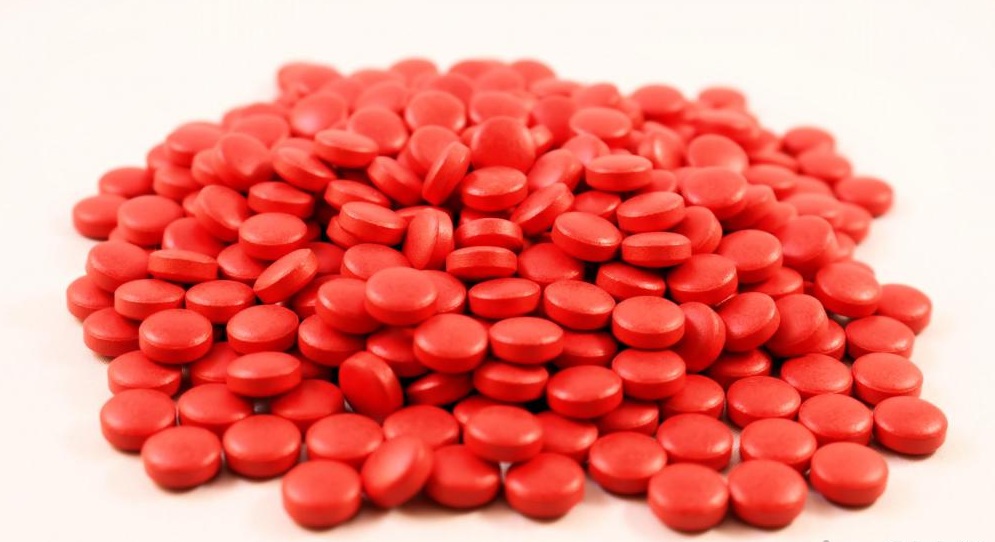Sim Cases Cliff Notes - March 2018
/Every month we summarize our simulation cases. No deep dive here, just the top 5 takeaways from each case. This month includes calcium channel blocker overdose, salicylate toxicity, iron overdose.
Calcium channel Blocker (CCB) Overdose
1. CCB's are the number one cause of fatal cardiovascular medication exposures.
- Although only 16 % of all cardiovascular drug exposures were due to CCBs, this class accounted for 38% of deaths [Watson 2002]
- An increasing incidence of cardiovascular disease and an aging population have resulted in an increasing number of toxic exposures.
- The availability of sustained-release formulations of these drugs has increased the morbidity and mortality of overdoses.
2. Understanding the pharmacology of CCB's will help clarify its pathophysiology, clinical presentation and treatment.
- CCB’s Impair Ca2+ influx into cardiac and smooth muscle myocytes.
- CCB's impair insulin release from pancreatic islet ß-cells (they are regulated by Ca2+ influx through a slow Ca++ channel)
- CCB overdose results in decrease in contractility (hypotension), conduction system (conduction blocks and bradycardia), smooth muscle contraction (hypotension), and insulin release (hyperglycemia but organ "starvation")
Graphic by Tammi Schaeffer, DO
3. The clinical presentation of calcium - channel blocker overdose varies depending on the agent ingested.
- Verapamil and diltiazem cause severe bradycardias and variable heart blocks.
- Drugs ingested in the dihydropiridine class (including nifedipine) tend to produce more hypotension rather than conduction abnormalities, and can cause reflex tachycardia soon after an overdose.
- The most severe cardiotoxic effects result from the strong negative inotropic and chronotropic effects of nondihydropyridines (verapamil overdoses, specifically, have high potential for lethality).
4. The ECG is essential in the evaluation of a patient with suspected cardiovascular toxicity.
- While bradycardia may commonly be seen, a wide variety of dysrhythmias and blocks are possible (PR prolongation, variable atrioventricular blocks, junctional rhythms, bundle branch blocks, QT prolongation).
- Check out Life in the Fast Lane's ECG library for Beta-Blocker and Calcium Channel Blocker Toxicity
5. Treatment of CCB toxicity is based on the severity of the presentation.
- Start with your basic supportive care:
- Establish IV access
- Start cardiac monitoring
- Obtain ECG
- Place pacer pads on patient
- Administer IV fluids (20 ml/kg bolus)
- Consult poison control
- If no response with the above measures:
- Continue IV fluids until adequate preload
- Consider atropine 0.5-1 mg IV every 2 min (up to 3 mg)
- Consider activated charcoal (1-2 g/kg po) if < 1 hr ingestion
- Consider whole bowel irrigation if sustained release formulation and stable patient
- Consider adjunctive medications:
- Glucagon 3-5 mg IV (over 1-2 minutes), infusion (if response to bolus) at 2-5 mg/hr
- Calcium gluconate (30-60 ml of 10% Calcium Gluconate)
- If hemodynamically unstable and the above measures are not successful, begin vasopressors, hyperinsulinemia euglycemic therapy (HIE)
- The ideal vasopressor in CCB poisoning would be a direct-acting agent with positive inotropy, positive chronotropy, and vasoconstrictive effects. Based on these criteria, norepinephrine should be the initial vasopressor of choice.
- Hyperinsulinemia Euglycemia therapy
- Enables cardiac cells and other organs to take in glucose from blood stream (improving myocardial contractility, vasomotor tone, hyperglycemia and acidemia)
- Requires frequent glucose monitoring (as often as every 15 minutes) and glucose supplementation until the patient's serum glucose is stabilized on a given insulin dose (although hypoglycemia uncommon during HIE for CCB OD)
- If necessary, euglycemia can be maintained by means of a continuous IV infusion of 5 to 10 percent dextrose. A reasonable initial rate for such an infusion is 0.5 to 1 g of dextrose/kg per hour.
- The serum potassium concentration is measured every 30 minutes until it is stable, and every one to two hours thereafter. Supplementation is given as necessary to maintain a potassium concentration in the low normal range.
Additional FOAMed Resources
1. Management of calcium channel blocker overdose in the emergency department on First 10 in EM
2. Calcium Channel Blocker Toxicity on EM Docs
3. Check out this great video on Calcium Blocker Toxicity on EM in 5
References
1. Brontsetin AC, Spyker, DA, Cantilena LR, Jr., et al. 2011 Annual report of the American Association of Poison Control Center's National Poison Data system (NPDS); 29th Annual Report. Clin Toxicol (Phila). 2012; 50 (10): 911-1164. [Pubmed]
2. Watson WA, Litovitz TL, Rodgers GC Jr, et al. 2002 annual report of the American Association of Poison Control Centers Toxic Exposure Surveillance System. Am J Emerg Med 2003; 21:353. [Pubmed]
3. Thanacoody R, Caravati EM, Troutman B, et al. Position paper update: whole bowel irrigation for gastrointestinal decontamination of overdose patients. Clin Toxicol (Phila) 2015; 53:5.[Pubmed]
4. Graudina A, Lee H, Druda D. Calcium channel antagonist and beta-blocker overdose: antidotes and adjunct therapies. Br J Pharmacol. 2016; 81(3):453-461.[Pubmed]
5. Kerns W. Management of B-adrenergic blocker and calcium channel antagonist toxicity. In Emergency Medicine Clinics of North America. Philadelphia, Elsevier. 2007; 25(2):309-331 [Pubmed]
5 step approach to the recognition and treatment of Salicylate toxicity
https://www.pinterest.com/pin/320248223477084566/
1. Salicylates are ubiquitous. Your patient could be exposed to salicylates, regardless whether or not they "take aspirin."
- Common salicylate containing medications are Aspirin and Pepto-Bismol (bismuth subsalicylate)
- Oil of Wintergreen (almost 7 grams per teaspoon!)
- Ton's of cough/cold medications contain salicylates (Alka Seltzer, Bayer PM, Fiorinal with codeine, Percodan, etc)
Graphic by Tammi schaeffer, DO
2. Understanding the pathophysiology will help you understand the presentation and toxicity.
- Direct stimulation of respiratory center
- Kussmaul Respirations
- Respiratory alkalosis
- Interferes with aerobic metabolism by uncoupling oxidative phosphorylation
- Generation of lactate (organ damage, metabolic acidosis)
- Low glucose (CNS hypoglycemia relative to serum hypoglycemia)
- Hyperthermia from inefficient attempt at ATP production
- Electrolyte abnormalities (due to fever, increased metabolic rate, emesis, increased renal excretion of Na and K as compensatory to respiratory alkalosis)
- My mental image for salicylate toxicity? Hamster on a wheel...
- A lot of heavy breathing (tachypnea)
- Low glucose
- Lactate production
- Hyperthermia
- A lot of inefficient work (by the poisoned mitochondria) with little to show for it (inefficient ATP production).
3. Signs and symptoms of toxicity are a spectrum and trump levels (especially in chronic ingestions).
Graphic by Tammi Schaeffer, DO
4. Laboratory evaluation is extensive and includes serum salicylate levels every 2 hours until peaked, venous blood gas, LFT’s, CBC, PT, PTT, UA, ECG.
- Salicylate overdose can cause delayed gastric emptying, sometimes resulting in peak levels 24 hours after ingestion.
- As serum pH levels fall, salicylates diffuse into the tissues. This can result in declining serum salicylate levels that can be falsely misinterpreted as improving clinical status.
- In chronic salicylate toxicity, levels in the high-therapeutic range (i.e. 40 mg/dl) can cause significant CNS dysfunction (always correlate a level with the patient’s clinical status, serum pH).
5. There are three therapeutic objectives when treating salicylate toxicity.
- Prevent further absorption
- Activated charcoal (50 gm for adults, 1 gm/kg for children)
- Gastric lavage rarely indicated
- Consider whole bowel irrigation if high suspicion of bezoar
- Correct fluid and electrolyte abnormalities
- Restore normoperfusion to improve perfusion to kidneys and hasten elimination
- Must correct hypokalemia to effectively alkalinize urine
- Reduce tissue salicylate levels by elimination
- Alkalinize urine to help renal elimination
- Consider hemodialysis for the following indications:
- Serum salicylate level > 100 mg/dL
- Serum salicylate > 50 mg/dL after chronic ingestion
- Severe acidosis or other electrolyte disturbance 'refractory to optimal supportive care'
- End organ damage (cerebral edema, pulmonary edema)
- Patients who require intubation
- Progressive deterioration despite treatment
- Inability to tolerate NaHCO3 due to renal insufficiency, pulmonary edema or congestive heart failure
Graphic by Tammi Schaeffer, DO
ASA can Cross back into blood/brain when urine is not alkalinized (graphic by tammi schaeffer, do)
When urine is alkalinized, aspirin gets trapped in urine, setting up concentration gradient decreasing amount in brain (graphic by tammi schaeffer)
Additional FOAMed Resources
1. Check out this great 5 min video on Salicylate Toxicity on EM in 5
2. Pearls and pitfalls of salicylate toxicity on EM Docs
3. Salicylate poisoning on Emergency Medicine Cases
4. Five tips in managing acute salicylate overdose on Academic Life in EM
References
1. Soghoian, Sari MD., and Nelson, Lewis MD., “Pitfalls in the Management of Aspirin Poisoning.” Goldfrank’s Toxicologic Emergencies Ninth Edition. McGraw-Hill Medical, 2011. 508-520.
2. O'Malley GF. Emergency department management of the salicylate-poisoned patient. Emerg Med Clin North Am 2007; 25:333
3. Dargan PI, Wallace CI, Jones AL. An evidence based flowchart to guide the management of acute salicylate (aspirin) overdose. Emerg Med J. 2002 May;19(3):206-9 full-text [Pubmed]
4. American College of Medical Toxicology. Guidance document: management priorities in salicylate toxicity. J Med Toxicol. 2015 Mar;11(1):149-52. [Pubmed]
acute Iron poisoning
1. Pathophysiology
- Direct caustic injury to the gastrointestinal mucosa (bleeding, peforation, peritonitis)
- Cellular toxin impairing metabolism resulting in:
- Decreased cardiac output (due to depressant effect on cardiac cells)
- Capillary permeability and vasodilation (leading to third spacing and hypotension)
- Iron induced coagulopathy
- Metabolic acidosis (due to hyperlactemia and free proton production from hydration of free ferric ions)
2. Determine the amount of elemental iron ingested
- The toxicity of iron compound ingested depends upon the amount of elemental iron
- This varies considerably between different types of iron tablets, depending on the type of ferrous or ferric salt
- E.g. 10 tablets of ferrous sulfate ingested (325 mg tabl, 20% elemental iron: 10 X 0.2 (325) = 650 mg elemental iron
- Risk assessment according to dose:
https://lifeinthefastlane.com/toxicology-conundrum-034/
3. The diagnosis of iron toxicity is generally a clinical diagnosis, but serum iron levels 4-6 hours post ingestion can be measured.
Iron poisoning classically follows 5 stages, although the stages usually overlap, reflecting the two important phases of toxicity: gastrointestinal and systemic
4. Laboratory testing
- Serum iron levels peak 4-6 hours post ingestion hours.
- The peak level predicts severity of iron toxicity and guides management decisions.
- Iron is rapidly cleared from serum and deposited in the liver
- A measured level after the peak can be deceptively low
- Levels do not clearly correlate with clinical toxicity, but > 90 micromol/L (500 mcg/dL) is generally considered predictive of systemic toxicity (equivalent to >60mg/kg)
5. Treatment
- ABC’s and fluid resuscitation
- Resuscitate with boluses of 10-20 mL/kg crystalloid to prevent shock from gastrointestinal losses, vasodilation and third spacing.
- Activated charcoal and dialysis DON'T WORK.
- Consider whole bowel irrigation and deferoxamine for toxic ingestions
- WBI is achieved by administration of polyethylene glycol (PEG) solution via nasogastric tube at recommended rates of 500 mL/hr in children and 1.5 – 2 L/hr in adolescents and adults.
- Deferoxamine
- Chelates iron which is then renaly excreted or dialyzed
- Indications
- Serum iron > 500 ug/dL 4-6 hours post ingestion
- Patients with signs of significant toxicity such as repeated vomiting, increased gap metabolic acidosis, altered mental status, hypotension
- Should be administered intravenously at a continuous rate of 15 mg/kg per hour IV, which may be increased to a maximum of 35 mg/kg per hour, based on the severity of clinical symptoms.
Additional Foamed Resources
1. Iron overdose on Life in the Fast Lane
2. Management of iron toxicity on Academic Life in EM
References
1. Cohen AR (2007). Pediatric iron overload. Clinical Advances in Hematology & Oncology, 5 (8), 601-2. [Pubmed].
2. Manoguerra A, Erdman A, Booze L, et al. Iron ingestion: an evidence-based consensus guideline for out-of-hospital management. Clin Toxicol (Phila). 2005;43(6):553-570. [PubMed]
3. Mills K, Curry S. Acute iron poisoning. Emerg Med Clin North Am. 1994;12(2):397-413. [PubMed]
4. Chang T, Rangan C. Iron poisoning: a literature-based review of epidemiology, diagnosis, and management. Pediatr Emerg Care. 2011;27(10):978-985. [PubMed]
5. Madiwale T, Liebelt E. Iron: not a benign therapeutic drug. Curr Opin Pediatr 2006; 18:174.[Pubmed]
Written and Posted by Jeffrey A. Holmes, MD



























